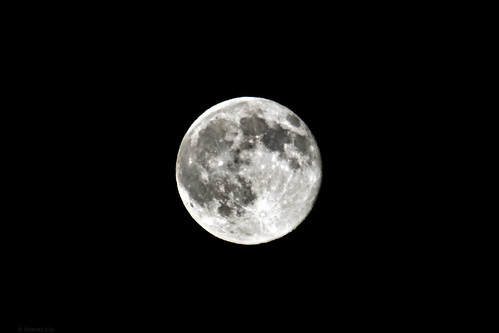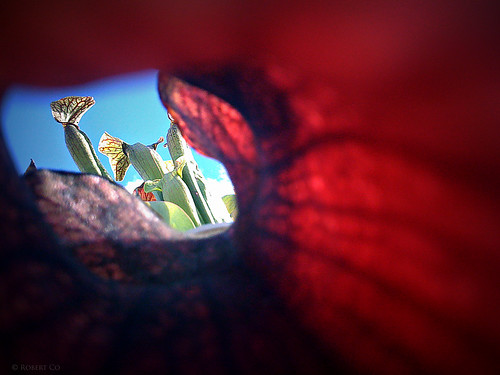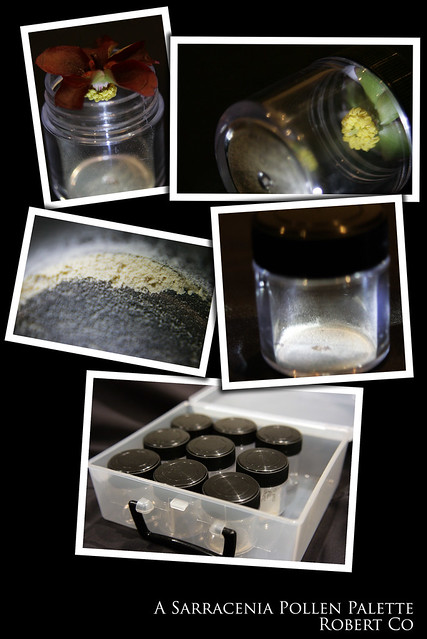It is a new season, and it’s becoming obvious in the garden, as well as life. I couldn’t help but thing about change as I was driving home from the office on this beautiful evening. I was appreciating some simple things about this change into fall: taking in the colors of the fall sky at dusk, rollin’ home down highway 1 with the windows down, breathing that fall air, the feel of the wind on my bald scalp… oh and pumpkin spice lattes now available! YEAH! (well, nix the pumpkin spice. I’m happy with just coffee.) 🙂
Cycles. Seasons. Change. Growth.
Beautiful.
Shifts are necessary in growing Sarracenia as well. When one grows Sarracenia from seed like me — things can and will get crowded *very* fast. Sure, seedlings will grow in the pot – for a while – but the true potential of the seedling won’t be visable until some changes happens and it’s given a little bit of room to grow.
The following photos are of a cross that I did last year of Sarracenia courtii, anthocyanin free clone x “Green Monster” (Photos here link to the actual parent plants.) This is S. courtii, anthocyanin free x excellens, anthocyanin free. Anthocyanin free plants lack pigmentation and are all green. All awesome. More examples from an earlier green post.
 [Sarracenia courtii, anthocyanin free x “Green Monster” – cross by Robert Co – It’s crowded! Sho ’nuff!]
[Sarracenia courtii, anthocyanin free x “Green Monster” – cross by Robert Co – It’s crowded! Sho ’nuff!]
In the photo above, the seedlings are growing very fast, however it’s time to sort this out. Time to sort and shift em into a place where they can grow.
 [Removed from the pot. Time to break em apart.]
[Removed from the pot. Time to break em apart.]
 [Sorting.]
[Sorting.]
The sorting process is fascinating. You don’t really realize how many seedlings are in there until you break it all apart. The strongest ones are evident, and the rest — well other growers will compost them, but I’d like to give this particular cross one year to see how the plants fare and adjust just due to the rarity of the parentage. I’m hoping for some surprises as some seedlings may look smaller and not as strong as their siblings at this time, but the next year after a little TLC, some could have a spurt and become the winners of the group. It has happened to me with a few earlier crosses.
 [Strongest seedling out of this batch. Good size and shape, and root system formed.]
[Strongest seedling out of this batch. Good size and shape, and root system formed.]
 [Fresh transplants… time for growth. In the coming years, their characters will be revealed.]
[Fresh transplants… time for growth. In the coming years, their characters will be revealed.]






 [Clockwise from top left: group shot | S. leucophylla ‘Hurricane Creek White’, division from a seed grown plant before the HCW site was destroyed | Handful of Sarracenia pods | A pocket full of fresh harvested pods in envelopes to extract seed later. Yes – Cargo pants come in handy in situations like this.]
[Clockwise from top left: group shot | S. leucophylla ‘Hurricane Creek White’, division from a seed grown plant before the HCW site was destroyed | Handful of Sarracenia pods | A pocket full of fresh harvested pods in envelopes to extract seed later. Yes – Cargo pants come in handy in situations like this.] [Some pretty cool windows on the back of this one..]
[Some pretty cool windows on the back of this one..] [Photo: A bugs point of view – inside Sarracenia catesbaei]
[Photo: A bugs point of view – inside Sarracenia catesbaei]
 [A Sarracenia Pollen Palette. It’s nerdy. But it works.]
[A Sarracenia Pollen Palette. It’s nerdy. But it works.]

